Master Hot Tub pH Balance: Tips for Clear, Comfortable Soaks
October 29th, 2024
October 29th, 2024
Stepping into the soothing embrace of a hot tub should be a blissful experience, yet the harmony can be disrupted if the water's chemistry is off-balance. A common culprit in these spas gone awry is high pH levels, which can lead to cloudy water, itchy skin, and a compromised efficiency of sanitizers. Yet, fear not—restoring that perfect aquatic equilibrium is simpler than it seems.
Years ago, I faced this very issue. After purchasing our first hot tub, I noticed the water was often cloudy and less inviting than anticipated. A little research revealed that our pH levels were too high, causing our expensive sanitizers to underperform. It was time to take action.
Understanding the cause of high pH is crucial. Often, it's due to the introduction of new water, usage of alkaline cleaning products, or even the natural evaporation process. Once identified, the solution becomes apparent. Utilizing pH decreasers, such as sodium bisulfate, offers precision in lowering pH levels. Regular testing is essential to maintain this balance and ensure longevity of the components.
Sharing this knowledge, I hope to save you from the frustration I once faced. By managing your hot tub's pH, you’ll not only enjoy clearer, more relaxing waters, but also protect your investment for years of therapeutic soaks. Let’s explore the methods to achieve that perfect pH harmony.
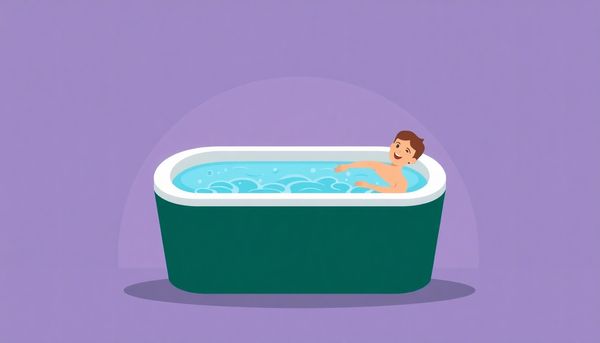
When it comes to maintaining a hot tub, balancing the pH level is crucial for both comfort and equipment longevity. High pH levels can lead to scaling, cloudy water, and even skin irritation, which is why using a pH Decreaser, such as sodium bisulfate, is a smart choice. This product is specifically formulated for hot tubs, offering a predictable and safe way to adjust the pH balance without the guesswork associated with household items like vinegar.
In my experience, a pH Decreaser works wonders when used correctly. Start by testing your water with a reliable strip, aiming for that sweet spot between 7.4 and 7.6. Once you have your reading, consult the product’s instructions to determine the right amount to add. It's important to sprinkle the decreaser into the hot tub while the jets are running on low, ensuring even distribution. Wait a few minutes, retest the water, and repeat the process if necessary.
When I first tackled this task with my own spa, I learned the hard way that precision matters. I initially misjudged the amount, leading to a yo-yo effect in my pH levels. Lesson learned: be meticulous and patient. Using gloves and goggles is also a good habit, as sodium bisulfate is an acid and can irritate your skin. By following these steps, you can prevent damage to your hot tub and keep your water inviting.
Navigating the world of hot tub maintenance can feel daunting, especially when it comes to choosing the right products to keep your spa in tip-top shape. With a plethora of options on the market, deciding on the best product to lower your hot tub's pH might seem like a task for a chemist. Rest assured, there's no need for a lab coat here. The key is to zero in on a reliable, dedicated pH decreaser like sodium bisulfate, which is designed specifically for hot tubs and swim spas.
Why is this choice so crucial? High pH levels, if left unchecked, can wreak havoc on your equipment, leading to costly repairs from scale buildup and inefficient heating. Products like household vinegar may technically lower pH, but their unpredictable potency and lack of precise dosing charts can lead to a guessing game you’d rather avoid. Besides, who wants their relaxation time smelling like a salad bar?
For consistency and peace of mind, stick with a product specifically formulated for hot tubs. It ensures your pH levels—and the associated costs of maintenance—stay in the optimal range. Always handle with care, following the instructions to avoid irritation and ensure the longevity of your spa. In doing so, you’ll set the stage for a perfectly balanced soak every time, turning your hot tub into a haven rather than a headache.
Regular testing and adjustment of your hot tub's pH levels can feel akin to a dance—you have to find the rhythm that suits you. One day, everything appears in harmony, and the next, an unexpected swing in levels can disrupt the balance. That's why frequent testing is paramount. Use a reliable test strip as your trusty partner in this endeavor. These little strips provide a snapshot of your water’s chemistry, revealing if you've veered off the ideal path of 7.4 to 7.6 pH.
A friend once told me about their nightmare of dealing with murky water and irritated skin, only to discover their pH was way off track because they hadn’t checked it in weeks. Don't follow in those footsteps; instead, make testing a regular part of your routine. Think of it as a health check-up for your water.
Once you've got your readings, adjust accordingly. If your pH is too high, a pH decreaser—preferably sodium bisulfate—will bring it back in line. Add it incrementally, allowing the jets to disperse the chemical evenly, then retest after a few minutes. Remember, small tweaks are better than drastic changes, preventing the seesaw effect of overcorrecting.
Ultimately, understanding and anticipating changes in your hot tub's pH is like becoming attuned to its personality. Regular attention ensures you’re always ready to make the necessary adjustments, keeping your soak sessions both safe and enjoyable.
Imagine the scenario: you’re ready for a relaxing soak, but your hot tub water isn’t as inviting as it should be. Often, the culprit is an imbalanced alkalinity level. Alkalinity acts as the unsung hero of pH balance, absorbing fluctuations and keeping your water’s chemistry in check. If alkalinity is out of whack, your pH levels might swing wildly, turning your peaceful soak into a frustrating chemical experiment.
To keep your hot tub water harmonious, routinely check alkalinity levels with a testing strip or kit. Aim for a reading between 80 to 120 parts per million (PPM), as this range optimizes pH stability without frequent adjustments. I once made the mistake of ignoring alkalinity, only to find myself constantly fiddling with pH levels. Lesson learned—the hard way!
When alkalinity strays too high, your pH may become stubbornly elevated. This is where your trusty pH decreaser comes into play. By gradually introducing sodium bisulfate while the jets circulate the water, you can lower alkalinity without overshooting your target. Patience is your best ally here; retest after each adjustment, ensuring everything falls into place.
Understanding this balance saves time and headaches, letting you enjoy your hot tub rather than becoming a part-time chemist. So, keep an eye on alkalinity, and your hot tub will thank you with sparkling, soothing waters.
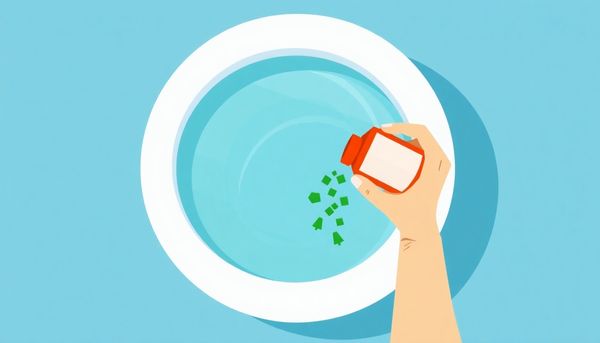
Balancing water chemistry in your hot tub is akin to conducting a symphony, where every component must harmonize to create a perfect soak. The goal is to keep both pH and alkalinity in check, ensuring not just comfort, but also the longevity of your spa's equipment. Imagine you’ve just tested the water, and the pH is sneaking above the ideal range of 7.4 to 7.6. This is where a trusted pH decreaser, like sodium bisulfate, comes to the rescue. It's specifically designed for hot tubs, making it a safer bet than improvising with pantry items like vinegar.
Adding the decreaser isn't just about tossing in the right amount. It’s about patience and precision. With the jets on low, sprinkle the chemical evenly and let it mix, ensuring it integrates seamlessly before you retest. This careful approach prevents the 'yo-yo effect'—where pH levels swing uncontrollably, frustrating your efforts to stabilize them.
Alkalinity, the unsung hero, must also be considered, as it acts as a buffer for pH fluctuations. Keeping alkalinity between 100 and 150 ppm is your secret weapon for maintaining pH stability. If alkalinity strays too far, your pH could become unpredictable, turning routine maintenance into a guessing game.
Balancing these elements not only perfects your soak but also guards against costly repairs and discomfort. Embrace the chemistry, and your hot tub will reward you with crystal-clear, inviting waters every time.
Choosing the right pH decreaser for your hot tub can make a world of difference. Amidst the rows of chemical bottles, each promising magic, it's easy to feel overwhelmed. Sodium bisulfate, often labeled as "pH Reducer" or "pH Decreaser," is your straightforward ally. This dry acid is designed specifically for hot tubs, unlike household alternatives like vinegar, which can introduce variability due to inconsistent strengths, leaving you guessing how much to use. The last thing you want is to turn your relaxing soak into a guessing game with unwelcome side effects.
I recall the time I tried using vinegar in a pinch. Not only did it take several attempts to get the dosage right, but the faint smell lingered, leaving my hot tub smelling more like a salad bar than a spa retreat. That's when I switched to a proper pH decreaser. With a quick dip of a test strip, the adjustments became precise and stress-free, keeping my hot tub in that sweet spot of 7.4 to 7.6 pH range. This not only protected my equipment from scale buildup but also ensured that the water stayed invitingly clear and comfortable against the skin.
Remember, accuracy is key. Use a test strip to measure your current pH level, and refer to the manufacturer's chart to add the correct amount of decreaser. By following these straightforward steps, you’ll not only save on maintenance costs but also enjoy a consistently refreshing soak.
Monitoring your hot tub’s pH level is more like an ongoing dialogue than a one-time fix. Engaging in this regular conversation with your water ensures a longer-lasting, comfortable soak. The process begins with a simple dip of a test strip, a small routine that can save hours of frustration later. Each color change on the strip offers a glimpse into the chemistry of your hot tub, revealing if it's time for a little adjustment.
Consider it like tuning a musical instrument. Just as a guitar needs frequent tweaks to sound its best, your hot tub benefits from regular checks to maintain its harmony. Testing weekly is sufficient for most, but if you’ve recently added water or chemicals, a couple of extra tests can prevent future headaches. The key lies in consistency. Keep a log if it helps, noting any changes in pH levels and your corresponding actions.
Adjustments should be gradual, respecting the delicate balance between pH and alkalinity. Add your pH decreaser slowly, and give it time to mingle with the water before retesting. This patience pays off in the form of reliably clear water and fewer surprises. Perhaps, like a friend who brings you hot cocoa on a cold day, your well-balanced hot tub greets you with warmth and ease, ready to offer relaxation without the drama of unpredictable pH swings.
Understanding why and how to monitor alkalinity levels in your hot tub is akin to appreciating the unsung hero of water chemistry. While pH often takes the spotlight with its potential to irritate skin or damage equipment, alkalinity quietly ensures that pH doesn't swing wildly. This stability is crucial; without it, maintaining a balanced pH would be like trying to hit a moving target.
To put this into practice, imagine alkalinity as the buffer that absorbs fluctuations, allowing your pH to remain steady within the desired range of 7.4 to 7.6. Regular testing of alkalinity, suggested to be between 80 to 120 parts per million (PPM), becomes your first line of defense against chaos in your water chemistry. With the help of a reliable test strip, you'll easily determine whether adjustments are necessary.
I've found that keeping alkalinity slightly higher, say around 120 PPM, reduces the frequency of adjustments needed. This approach means less time tinkering with chemicals and more time relaxing. Just like a seasoned traveler knows every shortcut and scenic route, frequent hot tub users come to appreciate the importance of these precise balances. In the long run, consistent monitoring not only protects your skin and equipment but also makes for clearer, more inviting water. A small effort towards maintaining alkalinity can transform your hot tub experience, ensuring it remains a sanctuary of relaxation rather than a source of frustration.
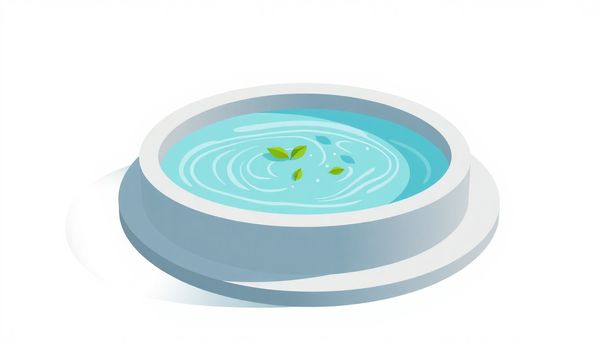
Monitoring the pH levels in your hot tub might seem like a minor task, but it plays a pivotal role in maintaining a safe and enjoyable soak. Regularly using test strips offers a quick and effective way to keep those levels in check. No need for fancy gadgets or expensive digital readers when a simple strip can tell you everything you need in seconds. It's like a quick health check-up for your hot tub: dip, wait, compare, and adjust.
Once, during a particularly chilly winter evening, I decided to have a relaxing soak only to find the water murky and itchy. A quick test strip revealed a sky-high pH, which explained the discomfort. With the right amount of pH decreaser, harmony was restored, and that night, my hot tub became the cozy haven it was meant to be.
Test strips are not just about convenience; they're your first defense against potential damage. High pH isn't just a discomfort; it can lead to costly repairs of heaters and pumps due to scale buildup. By checking your levels routinely, you can prevent these problems before they arise. It's a small step that ensures your tub remains a place of relaxation, not frustration. So, keep those strips handy, and your hot tub will thank you with every perfect soak.
Selecting the right pH decreaser can feel like navigating a maze, with a slew of options clamoring for your attention. Yet, with the well-being of your hot tub and skin at stake, it's crucial to choose wisely. A trusted pH decreaser, like sodium bisulfate, ensures that you maintain the ideal pH balance without the guesswork. This compound is specifically designed for hot tubs, ensuring that every soak is as comfortable as it is safe.
In my own hot tub adventures, I've dabbled with various alternatives, from white vinegar to citric acid. Although these can technically lower pH, they often leave you playing chemist, trying to nail down the right amount. Adding a splash too much vinegar, and suddenly your relaxing soak resembles a culinary experiment. These alternatives lack the precision and reliability of a product crafted for this purpose.
Sodium bisulfate stands out because it provides a consistent, predictable result. It’s not just about reaching that magic number between 7.4 and 7.6; it's about doing so efficiently and effectively. Plus, using a test strip ensures that you can monitor your progress without much hassle. Remember, while the temptation might be to save a few pennies with household items, investing in a specific hot tub decreaser saves you time and potential frustration, preserving both your equipment and your peace of mind.
Keeping your hot tub’s pH levels in check is much like maintaining the perfect spice level in a dish—too much or too little can spoil the experience. Regularly monitoring and adjusting the pH ensures you avoid problems like dry skin, cloudy water, or even damage to your hot tub’s components. Start by investing in reliable test strips; they’re efficient, affordable, and user-friendly. That's the first step to understanding your hot tub's current pH status, which ideally should be between 7.4 and 7.6.
Once you've identified the need to lower the pH, reach for a pH decreaser, often made of sodium bisulfate, specially designed for hot tubs. This product is more predictable and safer than household alternatives like vinegar, which can leave you guessing and might not properly mix with your tub’s chemistry. As you add the decreaser, activate the jets on a low setting, as this helps the chemical integrate evenly throughout the water. Wait a few minutes and retest to ensure you’re within the desired range.
Consistency is your ally. Regular testing and gradual adjustments prevent the pH from swinging out of control. It’s like tending to a garden—small, attentive actions lead to a flourishing environment. Your hot tub will thank you with clear, comfortable water, providing a relaxing soak every time.
Maintaining the perfect soak in your hot tub isn't only about achieving the right pH; it's also crucial to balance alkalinity. Alkalinity acts as the silent sentinel, stabilizing pH levels and preventing wild fluctuations. Without it, your pH could swing dramatically, leaving you chasing numbers instead of relaxation.
Consider alkalinity as the backbone of water chemistry. It absorbs pH shifts, helping to keep everything in equilibrium. If alkalinity is low, pH can plummet with little provocation, creating an acidic environment that can damage equipment and irritate skin. On the other hand, high alkalinity can make it challenging to adjust pH, leaving you with stubborn scale deposits and cloudy water.
Achieving the right balance starts with testing. Use reliable test strips to gauge both alkalinity and pH levels. Aim for an alkalinity range of 80 to 120 parts per million (PPM). Some prefer it on the higher side, reducing the frequency of adjustments. Yet, it's vital to keep it within a range that complements your pH target of 7.4 to 7.6.
Adjustments can be made using a pH decreaser, like sodium bisulfate, which also subtly influences alkalinity. Add it gradually while monitoring the water chemistry closely. Remember, patience is key; drastic changes can lead to imbalances, negating your efforts. By understanding and managing both pH and alkalinity, you ensure a hot tub experience that is as enjoyable as it is safe.
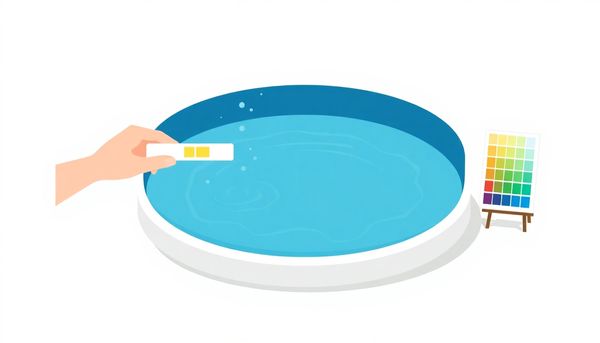
Maintaining the ideal pH level in your hot tub isn't just a matter of comfort—it's essential for the health of your equipment and your skin. When pH levels soar, the water becomes hostile, leading to a cascade of issues that can be both irritating and costly. That dry, itchy sensation you feel after a soak? Often, it’s the result of elevated pH. This high alkalinity can irritate the skin and eyes, turning what should be a relaxing soak into a bothersome experience.
Moreover, a high pH doesn't play nice with your hot tub’s inner workings. It promotes calcium buildup or scaling, particularly on heating elements and pumps. Over time, this scaling can decrease the efficiency of your heater, meaning your energy bills might see an unnecessary spike. You might even face expensive repairs or replacements if corrosion sets in, gnawing away at components like pipes and seals.
In addition to mechanical wear and tear, high pH adds a foggy, uninviting appearance to the water. This cloudy water often signifies that sanitizers like chlorine or bromine are struggling to work effectively. Keeping your pH within the comfortable range of 7.4 to 7.6 ensures that your hot tub remains a clean, inviting oasis rather than an unpredictable chemistry experiment. Think of it as tending to a delicate ecosystem where balance keeps everything flourishing.
Tackling the chemistry of your hot tub might seem daunting, but using a recommended pH decreaser can simplify the process. Sodium bisulfate, often labeled as a pH reducer, is a dry acid specifically crafted for hot tubs. This tool is essential for maintaining the delicate balance in your spa. Imagine the frustration of hazy water or irritated eyes after a soak; these issues often stem from an elevated pH level. By keeping your spa's pH between 7.4 and 7.6, you're ensuring a comfortable and efficient hot tub experience.
Household remedies like white vinegar or citric acid might pop up in online searches, but they lack the precision you need. Without specific guidelines, you’re left to guess how much to add, risking an unpleasant, vinegar-scented soak in the process. Instead, a pH decreaser offers reliability, allowing you to follow precise instructions tailored for your spa's needs. Armed with a test strip, you can easily monitor your water’s pH and adjust accordingly.
Moreover, using a commercial pH decreaser protects your hot tub from potential damage. High pH can lead to stubborn scale buildup inside your heater, increasing your energy consumption and utility bills. It's not just about comfort—it's also about preserving your investment. So, save yourself the hassle and potential cost by sticking to a product designed for hot tubs. It’s a small step that makes a big difference in maintaining your personal oasis.
One might be tempted to raid the kitchen for quick fixes like white vinegar or baking soda when faced with hot tub pH imbalances. These household items, despite their usefulness elsewhere, bring a host of uncertainties to the world of hot tub care. White vinegar, for instance, while capable of lowering pH as a mild acid, leaves you guessing on quantities. Every addition becomes a gamble, lacking the precision needed for your spa sanctuary. Furthermore, there's the oddity of transforming your soothing soak into something reminiscent of salad dressing—a less than ideal scenario for relaxation.
The allure of everyday items also misses a crucial point: the long-term effects on your hot tub’s components. Consistently using household cleaners might not only fail to achieve the desired pH balance but can also lead to damage over time. This is where dedicated products like pH Decreaser come into play. Specifically formulated for hot tubs, these solutions provide reliable, consistent results without risking the integrity of your equipment.
Spare yourself the guesswork and potential mishaps. Investing in a pH Decreaser offers peace of mind and ensures that every soak is as comfortable and safe as intended. So, while rummaging through the kitchen might seem convenient, opting for precision will protect both your hot tub and your peace of mind.
Keeping an eye on your hot tub's pH isn't a set-it-and-forget-it task. A weekly ritual involving a few test strips can save you from potential headaches down the road. One day, you might notice the water feels a bit different on your skin or the clarity isn’t what it used to be—these subtle cues are often linked to pH imbalances. A simple test will confirm if things have veered off course.
From personal experience, neglecting these little checks can result in cloudy water and a sluggish heater. Last summer, I learned this the hard way, spending an entire afternoon troubleshooting my tub’s cloudy water—only to realize a minor adjustment in pH could have prevented it all.
When adjusting, remember that less is definitely more. Pour small amounts of pH decreaser or natural alternatives like citric acid, and give your tub a few minutes to circulate before testing again. It’s a process that might seem tedious now, but it becomes second nature with time. Plus, it's an opportunity to ensure your next soak is perfect.
Keep a log of your adjustments and readings; it’s a great way to track what works best for your specific tub. This proactive approach helps maintain not just the water’s quality but also the longevity of your equipment, saving you both time and money in the long run.
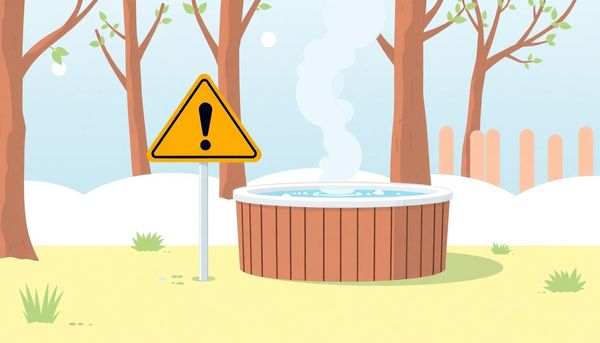
When it comes to managing your hot tub's pH, safety and precision should be top priorities. Opting for a dedicated pH Decreaser, such as Sodium Bisulfate, offers a targeted and effective solution. This product is specifically formulated for hot tubs, ensuring you avoid the guesswork and potential mishaps that accompany household alternatives. While white vinegar might be a quick fix, its unpredictable strength can lead to inconsistencies in water balance, often leaving you more frustrated than relaxed.
On a chilly evening last winter, I decided to experiment with vinegar after reading about its potential. The result? A tub that smelled like a vinaigrette, much to my partner's chagrin. More importantly, consistently maintaining the right pH was an uphill battle. That experience taught me the importance of using products designed for the task at hand.
Sodium Bisulfate allows you to adjust pH levels with confidence and precision. Pair this with regular testing using test strips, and you can easily keep your water in the ideal range of 7.4 to 7.6. This ensures your hot tub stays inviting, free from issues like cloudy water or skin irritation. Remember, balancing the pH not only protects your hot tub's components but enhances your overall spa experience. Choose wisely, and your hot tub will thank you with crystal-clear, soothing waters.
Selecting the right products to decrease pH in your hot tub is like choosing the perfect tool for a delicate repair job—it requires precision and the right equipment. The standout choice for many hot tub owners is Sodium Bisulfate, commonly branded as a pH Decreaser. This dry acid is expertly formulated for spa use, ensuring a smooth and effective reduction of pH without the guesswork that comes with non-specialized products.
Choosing a dedicated hot tub pH Decreaser over household items like white vinegar is wise. While vinegar might seem like a handy solution, its varying strengths make it an unreliable partner for maintaining your spa’s pH balance. Additionally, the idea of soaking in what could be a giant vinaigrette bath isn’t particularly appealing for most.
Always follow manufacturer guidelines when using chemical solutions to adjust your hot tub’s pH. Using test strips, which offer a quick and fairly accurate readout, is essential to ensure the pH stays within the ideal range of 7.4 to 7.6. This range not only keeps your tub comfortable to use but also protects your equipment from the damaging effects of high pH, such as scale buildup and inefficient sanitizer performance.
So, the next time your spa’s pH levels start to creep up, reach for that pH Decreaser. It’s a small step that can save you from future headaches and costly repairs, ensuring your hot tub remains a place of relaxation rather than stress.
With hot tubs, embracing natural solutions can be a game-changer for both your spa experience and the planet. Traditional pH decreasers, like sodium bisulfate, are effective, but sometimes they might not be readily available or fit your preference for a more eco-friendly option. Enter the humble white vinegar and citric acid, household staples that offer a gentle approach to pH adjustment.
White vinegar, a familiar kitchen ally, can serve more than just culinary purposes. For every 100 gallons of hot tub water, adding half a cup of white vinegar can nudge the pH levels downward. Unlike commercial acids, vinegar's milder acetic acid content offers a safer handling experience. However, it requires a bit of patience and precision, as its effectiveness can vary with different brands and strengths. Always test after each addition to find that sweet spot without turning your spa into a salad dressing pool.
Citric acid is another contender in the natural solutions arena. This citrus-derived powder, often found in lemon juice, provides an equally friendly option. Added in similar proportions as vinegar, it helps to gently lower pH without the harshness of stronger chemicals. Plus, there's an added benefit: the light, fresh scent of citrus can make your next soak feel like a mini tropical escape.
While these natural alternatives may demand a bit more trial and error, they invite a greener, more personalized approach to hot tub maintenance. Plus, they're gentle on both your senses and the environment, making them worthy contenders in the quest for balanced spa water.
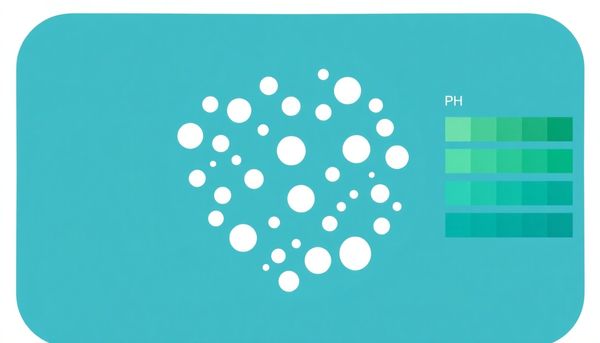
This article provided insights into maintaining your pool. Start your pool care journey today!
Want to become a pool maintenance expert? Our free Pool School course covers everything you need to know about pool care. From basic maintenance to advanced troubleshooting, you'll learn how to:
Join over 10,000 pool owners who have already transformed their pool care routine. Get started with our free Pool School course today!